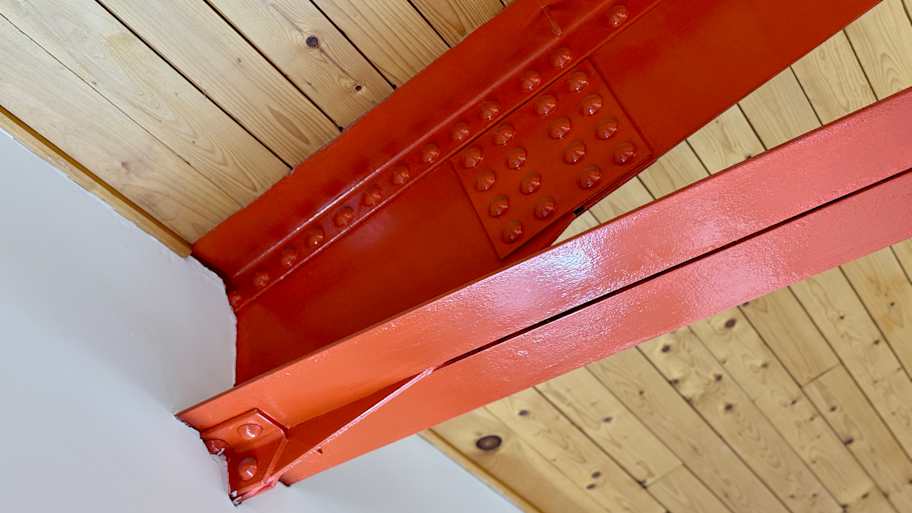
The cost of a structural engineer is easily justifiable given the value they bring to the table. Use this guide to see what hiring your professional will total in Phoenix, AZ.
Don’t hold up your house framing project with the wrong size steel beam


Steel beams are available in a range of sizes and styles to add stability to your home’s structure.
Determining the right dimensions for a steel beam can be complex and is best handled by a structural engineer or other construction professional.
The right size steel beam depends on its intended use, the weight of the structure it’s supporting, and more.
Steel beams help make up the backbone of your home’s structure, so it’s critical to ensure you have the right size steel beam for the job. With a wide variety of beam types and sizes, knowing which one to choose can be complicated, and the wrong size steel beam can have catastrophic results. A structural engineer can determine the right size steel beam for your project, but we break down what to know about steel beam sizes so you can make an informed decision along with a construction pro.
Steel beams are commonly measured using three main dimensions: depth (the vertical distance from the top to the bottom of the beam), flange width (the horizontal measurement of the flanges), and web thickness (the thickness of the central vertical section that connects the two beams). Steel beams are available in a wide variety of sizes and lengths—a local structural engineer will be able to calculate the exact dimensions you need for your project.
In most cases, steel beams in a residential setting will range in depth between 3 and 30 inches, flange width from 2 to 14 inches, and web thickness from 0.1 to 1 inch. The size beam you’ll need will depend on what it’s being used for and how much weight it’s meant to support.

Steel beams come in various types, with I-beams, W-beams, and M-beams being most common for residential purposes. Each type differs in dimensions, and a range of sizes is available within each type.
| Type of Beam | Common Depth (Inches) | Common Flange Width (Inches) | Common Web Thickness (Inches) |
|---|---|---|---|
| I-beam | 7–24 | 3–8 | 0.2–0.8 |
| W-beam | 6–27 | 7–14 | 0.2–0.7 |
| M-beam | 3–12 | 2–4 | 0.1–0.4 |
I-beams are what are normally referred to as standard steel beams, constructed in the shape of a capital serif “I,” with flanges (parallel horizontal components) that are shorter than the depth or height of the web (the middle component connecting the flanges).
I-beams have a wide range of uses and are often used for main structural support beams in houses. Installing a steel I-beam costs anywhere from $1,000 to $20,000, depending on the size of the beam and the complexity of installation.
W-beams, also called wide-flange beams, are a type of I-beam with wider flanges than standard I-beams. The wider flange allows them to support heavier weights, making them a good choice for larger houses with heavier structures.
M-beams are smaller and lighter than I-beams and W-beams, and are often found in manufactured homes or used in roofing. These are less common than other types of steel beams, but are still used in some residential applications.
Measuring and installing a steel beam is a job best left to the pros—in fact, in some areas, it’s a legal requirement for a qualified and licensed professional to install a steel beam. You’ll want to hire a structural engineer for any project involving your home’s structural integrity to ensure everything is measured and installed correctly and that you comply with all local codes.
The size steel beam you need depends on several factors. We break down some of the things that influence what size and type of steel beam is the right choice for your project. Again, it’s very important to consult with a structural engineer or other qualified professional to ensure the structural safety and stability of your home when installing or replacing a steel beam.
The size beam you’ll need depends on what that beam is going to support. Your home’s main support beam will be holding up a significant amount of weight, so a structural engineer will need to make precise calculations to determine the dimensions needed to ensure the beam can support all the weight it needs to.
The beam’s use will also affect the necessary size. Steel beams can be used as main support beams, floor beams, roof beams, and elsewhere throughout your home’s structure. How and where the beam will be used will dictate the size and type of beam you’ll need.
The length, or span, of the beam will also influence the dimensions you’ll need. Supporting heavy weight over a long distance has different structural requirements, so you’ll need to consider the beam span when calculating the dimensions.
Some areas have strict building codes that dictate the type and size of steel beam you’ll need to use in your home—some even spell out the different requirements for a steel beam compared to a wood beam. A structural engineer will be well-versed in local codes and regulations and can ensure your steel beam meets all necessary requirements.
The wrong size steel beam can be catastrophic for your house. A beam that’s not strong enough to support the weight it needs to can lead to major structural issues, even collapse. A beam that’s too heavy for where it’s used can add significant strain to your home’s structure and cause serious damage. Investing in the cost of a structural engineer to perform the necessary calculations and confirm you have the exact size steel beam you need can save you big headaches and serious repair bills later on.
From average costs to expert advice, get all the answers you need to get your job done.

The cost of a structural engineer is easily justifiable given the value they bring to the table. Use this guide to see what hiring your professional will total in Phoenix, AZ.

Beam installation costs are an important consideration if you’re building a home or doing renovations. Learn about average costs and factors in this guide.

Looking to remove load-bearing walls and vertical supports to open up your living space? Learn about what affects the cost to install an LVL beam.

Wondering what a lally column is? Learn what it is, how it works, when you need one, and the pros and cons in this simple guide.

Before removing a wall, make sure it’s not load-bearing. Learn the benefits of hiring a structural engineer to check if a wall is load-bearing.

Keeping your home safe and structurally sound should be a top priority. Learn to recognize the signs of structural damage you should never ignore.